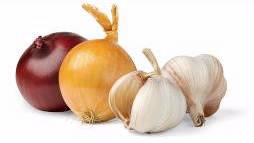EMBARGOED FOR RELEASE | August 21, 2012
In your future: More healthful foods to nourish the non-human you
Note to journalists: Please report that this research was presented at a meeting of the American Chemical Society.
PHILADELPHIA, Aug. 21, 2012 — The focus of nutrition for good health is quietly shifting to include consumption of food ingredients specifically designed to nourish the non-human cells that comprise 80 percent of the cells in the typical person, an authority on the topic said here today.
Speaking at the 244th National Meeting & Exposition of the American Chemical Society, the world’s largest scientific society, Robert Rastall, Ph.D., cited several factors driving these so-called “prebiotic” ingredients toward more foods. Food scientists, for instance, are developing new sources of the healthful substances for use in a variety of foods, and scientific evidence on the benefits of eating prebiotics is growing.
Media Contact
During Aug. 17-23, the contacts can be reached at 215-418-2086.
Michael Bernstein
202-872-6042
m_bernstein@acs.org
Michael Woods
202-872-6293
m_woods@acs.org
“Just as people need food to thrive, so do the billions of healthful bacteria that live in our guts, our gastrointestinal tract,” Rastall explained. “There’s a large and expanding body of scientific evidence that bacteria in the gut play a role in health and disease. Prebiotics are foods that contain nutrients that support the growth and activity of these friendly bacteria.”
Rastall contrasted prebiotics to the more familiar “probiotics,” already being promoted on the labels of food like yogurt and some dietary supplements. He heads the Department of Food and Nutritional
Sciences at the University of Reading in the U.K. and is co-author of widely used textbooks on prebiotics and probiotics.
Probiotic foods actually contain friendly bacteria like Lactobacillus acidophilus believed to release healthful substances as they grow in the GI tract. Prebiotics are indigestible food ingredients that provide no nutrition to people. Their purpose is to nourish the friendly bacteria among the estimated 100 trillion microbes living inside the human GI tract.
Foods promoted for a prebiotic effect already are on the market in the European Union, and Rastall predicted that prebiotics will gain a greater foothold in Europe and the United States. One major advantage: Prebiotics do not require refrigeration like probiotic yogurt and other dairy products and could be incorporated into a wider range of foods.
Rastall noted that people get small amounts of one of the most common prebiotics, called inulin, from wheat, onions, garlic, chicory and certain other foods. He cited studies showing that when people eat more inulin and other prebiotics, the balance of microbes in the gut shifts to one linked to a range of health benefits.
To help people get more prebiotics in their diet, Rastall’s team in the U.K., working with colleagues at the U.S. Department of Agriculture’s Agricultural Research Service, is finding ways to make prebiotics from plant carbohydrates like pectins, mannans and xylans.
They are using plant biomass, like stems and husks, as sources for those carbohydrates, which then are converted to the shorter carbohydrates that make up prebiotics. The goal is preparation of prebiotic carbohydrates that have neutral tastes and can withstand heating so they could be easily added to processed foods. These new prebiotics also could be used as stand-alone dietary supplements, he added.
“Prebiotics may prove to be most useful in specific population groups and people with specific health problems rather than the general population,” Rastall said. He cited, for instance, individuals with gastrointestinal diseases, Type-2 diabetes and low-grade inflammation linked to an increased risk of heart disease and other conditions, and people at risk for travelers’ diarrhea.
To automatically receive news releases from the American Chemical Society contact newsroom@acs.org.
###

that nourish friendly bacteria in the GI tract,
could be joined by a new genre of prebiotic food
ingredients.

